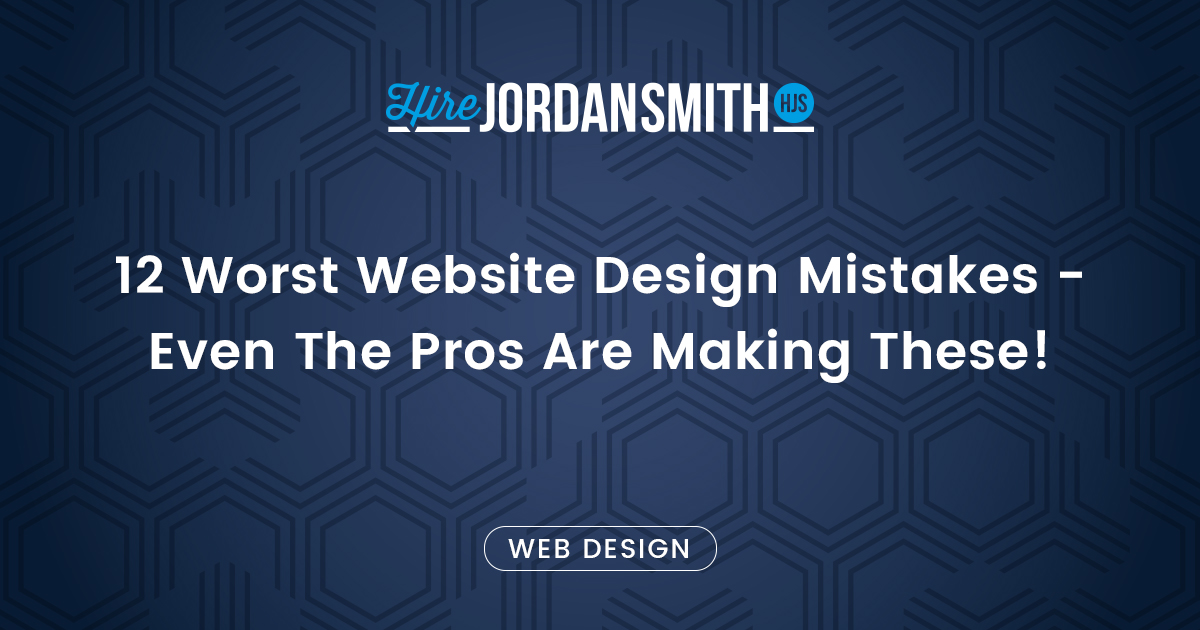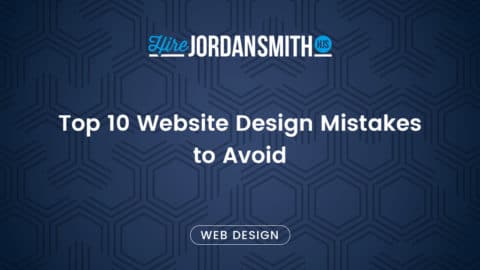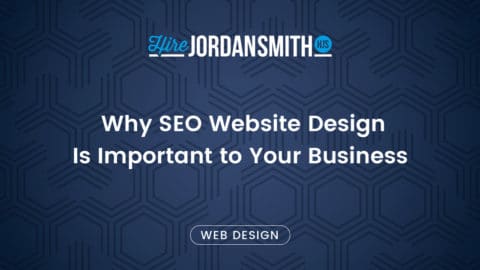8 seconds. That’s how long you have to impress a customer that visits your website for the first time.
That is shorter than the attention span of a goldfish.
Maybe even scarier, another recent study found that mobile users see an 88% decrease in attention span on an annual basis.
Your website needs to stand out in a big way, and now is the best time to evaluate your web design strategy.
Don’t be guilty of these worst website design mistakes.
Avoid These Worst Website Design Mistakes
Your website design will either attract a customer or immediately scare them away. Make an impression by avoiding these 12 worst website design mistakes period.
Table of Contents
Not Optimized for Mobile
People are spending more and more time on their mobile devices and less on desktop computers.
Because mobile users rely on cell service or WiFi, connectivity is an issue. This means responsive websites with fast page load times are more important to mobile users than desktop users.
Your website needs to look great on different screen sizes and load quickly in each scenario to keep users coming back.
Unclear Call to Action
What is your website trying to achieve? If users can figure that out in those first 8 seconds, they’re more likely to click away to something else.
A call to action (CTA) is a prompt that inspires a user to take a specified action. It tells them what to do next. For example, if there’s a CTA at the end of a blog post asking users to leave a comment, that encourages them to stay on the site longer.
An effective call to action helps you make a good impression and increases your website’s conversion rate.
Lack of Accessibility Features
It’s important that your website gives everyone access to the same information, regardless of the disabilities some users may have.
Most accessibility guidelines are beneficial for all users. Having a font that is too small, for example, may discourage some users from reading further. Everyone will benefit from increased font size with the option to adjust the size with their browser.
Creativity Overload
While most people appreciate creativity, sometimes you can go overboard.
Striving to be more creative than your competition can lead to designs that ignore the basic principles of legibility. You want your designs to be clear and have a purpose.
Don’t make the mistake of choosing fonts and colors that take away from your content.
Breaking All Conventions
While current graphic trends are rampant with asymmetrical layouts, neon colors, bold typography, and psychedelic elements, you can’t ignore basic user experience principles.
It can be easy to focus on design and forget to make sure your page is easy to navigate, accessible, and shows visual hierarchy.
Don’t suffocate your users with “out-of-this-world” design elements – make sure they know why they are there and how to navigate to the information they are looking for.
No SSL Certificate
If you’re not sure what this is, take a look at the bar on your browser. The little lock to the left of the URL indicates that the site you are on has an SSL certificate installed.
This verifies a website’s identity. This is especially important when users are supplying sensitive information such as credit card numbers.
An SSL certificate is not a necessity, but it can boost trust with your customers and keep improving your site’s ranking.
Missing Header Tags
Header tags are super important for search engine optimization. They identify a page’s content and reveal target keywords.
Put simply, H1 tags highlight the most important text on your page for search engines, which directs more users to your page.
You should be using H1 on each one of your pages.
Heavy Multimedia
Graphics and videos are great, but too many of either one can leave users with a headache.
Plus, too many images or videos can negatively affect your page loading time.
Users are sensitive to this type of content. Adobe found that 80% of people say that if content takes too long to load, they will click away or switch devices.
Using Pre-Loaders
Pre-loaders are no longer apart of the modern design pattern.
In the past, people used them to give other page assets time to load before users entered the site. Otherwise, the page would appear broken when users first arrived.
The modern internet is faster than ever before, so pre-loaders have become obsolete.
That attention span I mentioned earlier? Pre-loaders eat into that valuable time, leaving you with less time to impress users with your actual website.
Lack of White Space
Designers use white space as a tool to balance design elements. It helps organize content and prominently displays relevant information on your page.
Sometimes clients see white space and consider it wasted space, but this is far from the truth. White space keeps your pages from looking busy so users can digest the information efficiently.
Bad Menu Design
It should be easy for users to navigate your site to find what they need. If they can’t find it in a reasonable amount of time, they’re likely to leave and not return.
Avoid putting your navigation menu in a non-standard location. Most sites use horizontal menus across the top of the page, or under the logo in the top left.
Also, skip the dropdown menus. Most usability studies suggest that users find dropdown menus to be annoying.
Missing Contact Information
What’s the point of having a website that adequately advertises your products and services if there is no way for users to contact you?
It’s annoying to dig around to find contact details. Make it easy for your customers to buy from you! Include a visible link to your contact page on your website.
Time to Evaluate
You could have otherworldly content on your site, but no one is going to care if you have a bad website design.
The design of your website can make or break your business.
Keep a distance from these worst website design mistakes and create an engaging online experience for your customers.
Reach out and let me tell you how I can help your organization attract more business with high-quality web design.




